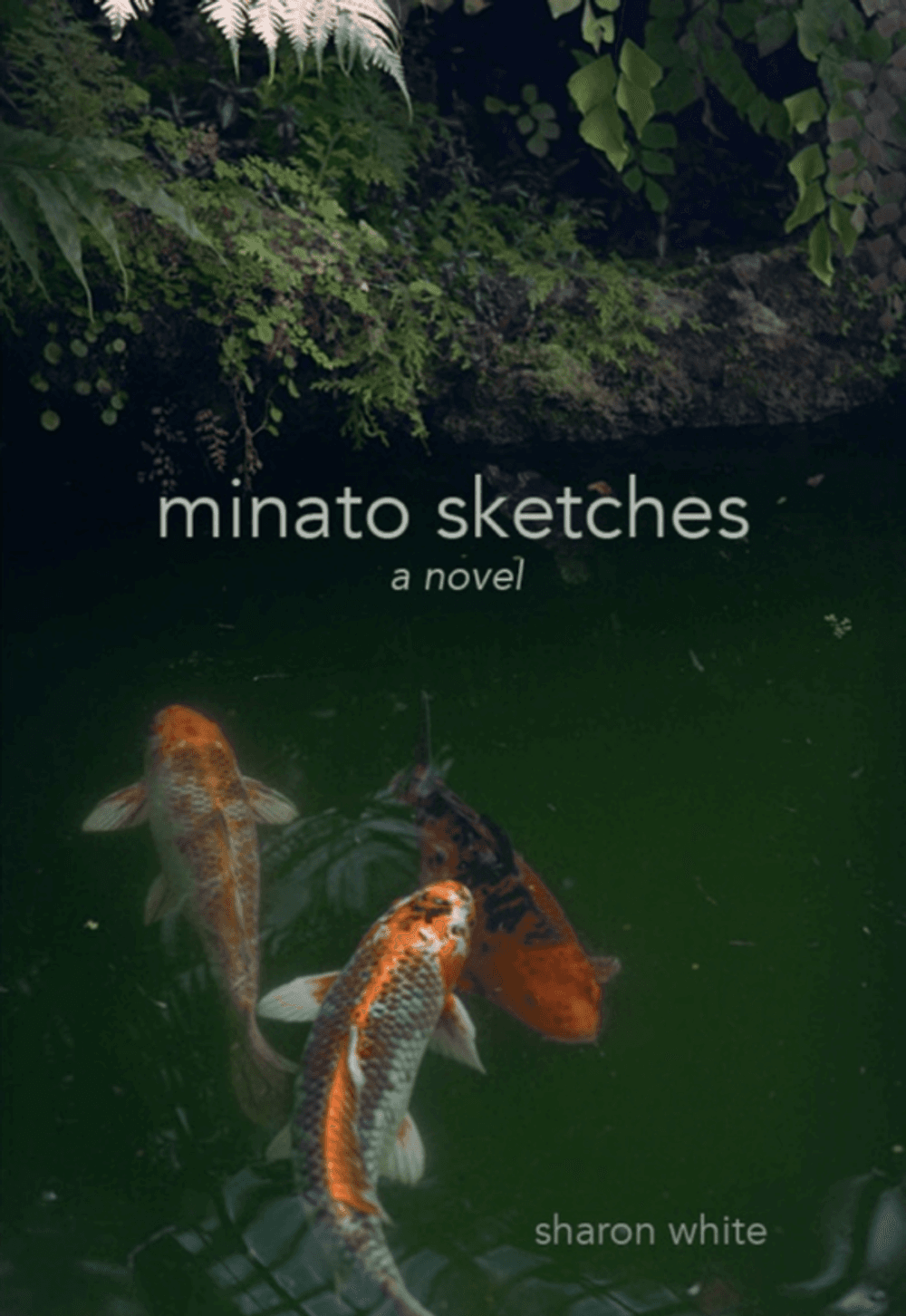Stay in the Loop
BSR publishes on a weekly schedule, with an email newsletter every Wednesday and Thursday morning. There’s no paywall, and subscribing is always free.
A tsunami of musings
minato sketches, by Sharon White

Sharon White’s poetic and sensory-rich new novel, minato sketches, introduces Gigi, an American art historian recovering from a stroke (as she calls it, “the lightning”). As a way to recontextualize her life and regain a sense of self, she leaves her family and goes to teach at an American university in Tokyo for a summer.
White is a multi-genre writer and associate professor emerita at Temple University, and her latest book is an interesting project, less a traditionally structured novel and more an exercise in imagery and introspection, inviting the use of readers' sensibilities in finding a greater meaning.
Many of the short chapters are a litany of small details Gigi notes as she’s walking from her little apartment to the university, traversing a garden taking in the natural beauty and local customs, or in a cafe with one of her work friends. Her musings about the city come through the gauze of nostalgia, but are also unhappily moored to her circumstances and physicality in the present.
Journeying with Gigi
Early in the novel, Gigi’s friend and coworker gives her an English translation of inspiring accounts from the people who survived the Tōhoku region’s 2011 earthquake, tsunami, and subsequent nuclear meltdown in Fukushima. These accounts become a touchstone for Gigi’s examination of her own life and recovery, and her thoughts take on an almost aquatic nature as they flow one into another. In one scene, Gigi crumbles a cookie to feed some birds while thinking about the tsunami stories, which reminds her of her little dog foraging for crumbs at her dying mother’s bedside, and then to a recounting of the day she had her stroke. White’s writing mimics the flow of thoughts through the mind and offers a way to tackle different themes over space and time and in multiple contexts.
As Gigi muses on this and other topics, including her mother’s long decline, White offers us Gigi’s observations and lets us interpret their weight and meaning. The story feels less like reading about Gigi’s journey and more like taking it with her, riding shotgun in her mind as she dispassionately makes decisions—some good, some bad—and processes how she’s arrived in this season of her life.
The resulting impression is that Gigi is a creature of longing. She longs for who she was before the stroke: the talkative, vibrant woman who was well-known and regarded in her field and kept the dinner table lively at home. Now she has trouble recalling the simplest of words at times, and clings to PowerPoints created by her husband when she teaches. Once a solitary and ambitious young woman, she longs to know who she could have become had she not married and become a mother.
She longs to relive the passionate love affair she enjoyed when she visited Japan in her youth. When she meets an enigmatic dance and yoga teacher named Richard at a faculty mixer, she is immediately intrigued. But is she interested in him because she wants to reconstruct a time when she was happy and free from the burdens of her current life?
Emotion in unexpected places
Getting to know Gigi is both interesting and frustrating. She imbues moments where she is actively engaged in an extra-marital flirtation with the same intensity as discerning what plants she wants to grow on the terrace of her little apartment. There are a few scenes of heightened emotion, but not always where you think they’ll be, and White’s vivid details do these moments justice. The description of a panic attack, for instance, strikes a visceral reaction in the reader.
Gigi’s longing is accompanied by a sharper, related emotion: resentment. Losing her mother was “like losing a limb,” but that doesn’t keep her from noting that her mother was a “pain in the neck,” and for much of her life, Gigi didn’t think her mother liked her. She reflects on her own family and current abilities with both gratitude and anger. She is not the same as she was, regardless of how hard her family or doctors insist that she’s healed. There’s an underlying outrage that they must have missed her dazzling achievements and presence prior to her stroke, since they believe that her current diminished form represents her full recovery.
Relatable and realistic
It's maddening not to be seen, and Gigi’s thoughts grow harsh. The reader might judge her, but we have to ask how we might be judged for our most private thoughts if we grappled with a life- and self-changing illness like Gigi’s.
White has created a relatable and realistic heroine. Minato sketches is an artistic read that asks as much from the reader as it is willing to give. All fiction has subjective elements, but the amount of observations and memories here that go without explicit context often leaves readers to bridge the connections themselves. When White draws the connections, the result is an intriguing and visceral stream of consciousness grounded in the strength, vulnerability, achievement, and foibles of a woman reconnecting with herself alone and in community.
What, When, Where
minato sketches. By Sharon White. Tampa: Minerva Rising Press, January 2025. 267 pages, paperback; $22.95. Get it here.
Sign up for our newsletter
All of the week's new articles, all in one place. Sign up for the free weekly BSR newsletters, and don't miss a conversation.

 Crystal Sparrow
Crystal Sparrow